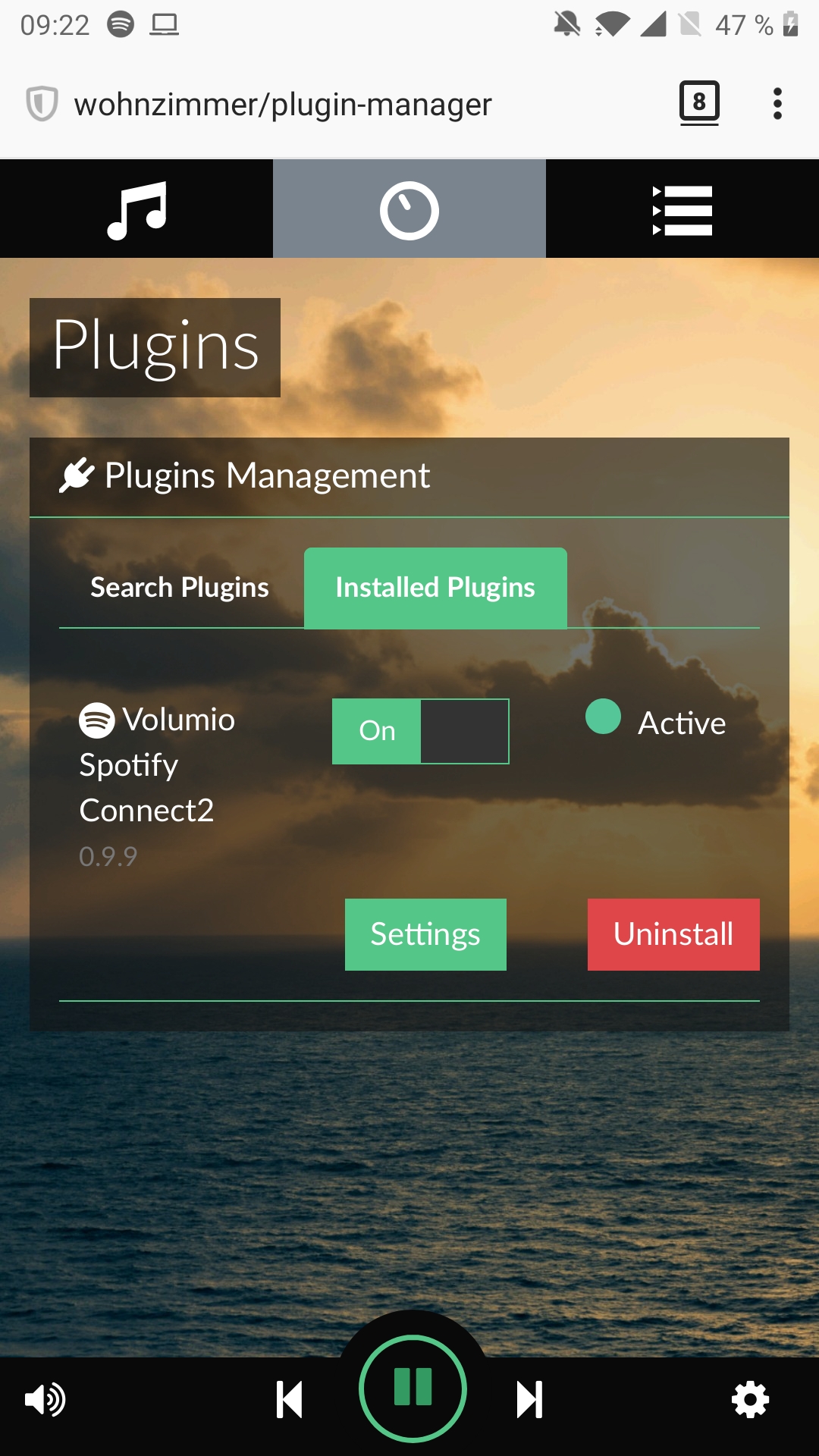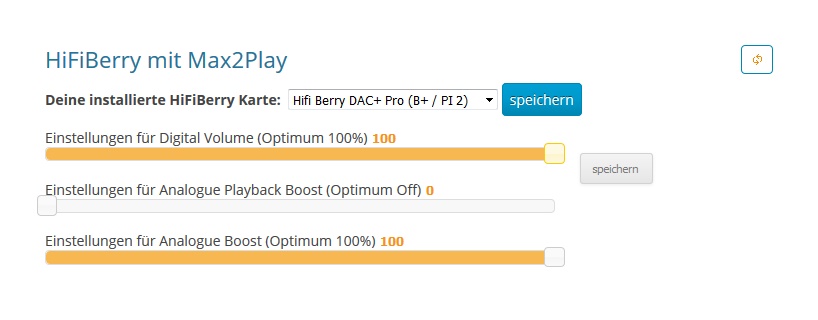Volumio Spotify Connect Plugin Download
Posted By admin On 29.11.20Plugin system overview
Volumio Spotify Not Working: Best Alternative of Volumio Spotify Plugin. If you have met some trouble like 'Spotify connect Volumio no sound', 'Volumio Spotify not working' or etc. When trying to play Spotify playlists on Volumio, here is the best solution for you. Spotify Connect for Volumio2. This is a Spotify connect implementation using librespot. This daemon is customised to work as the backend for the volspotconnect2 Spotify Connect plugin by: Providing metadata in json; Keeping track of state changes (Play Pause Seek) etc, Usage. Installing volspotconnect2 via the Volumio Plugin Manager should.
Introduction
Volumio2 introduces the concept of plugins to expand its functionality, and allow an easy sharing of the tweaks and improvements usually generated by the community. We've worked hard to create a standardized layout to make it easier to develop any kind of plugin. If you feel that your particular use case is not covered, please open an issue or discussion at the plugins repo:
- You can add Spotify to Volumio as well. If you want to listen to Spotify in Volumio, head to Settings Plugins and find Spotify. Then, merely click Install. Hit the Installed Plugins tab, and you'll see the Spotify plugin with an option to toggle it on and off, plus uninstall.
- Spotify Connect Plugin (old-volumio login with winscp) by gschmidt » Sat Dec 10, 2016 2:43 pm I think in Volumio 2 the default 'Volumio' user has not the same rights as the 'root' user in Volumio 1.55 did.
- Since yesterday, the spotify connect 2 plugin on my Volumio shows some strange behaviour: I can connect from my tablet to my Volumio device and select a song. But once a song started playing, I can't select another song to play. It just starts playing the current song again from the beginning or jumps some seconds back in the current song.
- With over 217 million active users, Spotify is one of the world’s most popular music streaming services. You can access Spotify’s entire catalogue via your Volumio server: 1. In Volumio’s menu on the left, select “Plugins.” 2. Select “Music services.” 3. Find the “Spotify” plugin and click its accompanying “Install” button.
- The new Spotify Web Api requires users to authenticate through an OAUTH flow where they sign in to their Spotify account and give the third party permission to access their account. Once that capability is added in Volumio, the entire new API can be used to create a very feature rich and compelling user experience for Spotify users with Volumio 2.
What is plugin ?
A plugin is meant to add one specific functionality.It could be music_service, system features, audio interface add on and almost everything developers (Volumio and community) can imagine.
There is two kinds of plugin :
- Official plugin : Plugin approved by the Volumio team and available through the webUI plugins page.
- Unofficial plugin : Not (yet) approved plugin. Most of the time from the community. For advanced users only and for testing. Requires some command line to be installed. It's better to wait for it to be approved..
Volumio Plugin Collection
How to install an official plugin ?
Plugins can be installed via Volumio's UI, by selecting the 'Plugins' menu entry : Cell data needed to download spotify songs.
From there you will be able to browse the Online Plugin Repository :
Select the plugin you want to install by clicking install on the right side.
Once installed, you have to click on Installed plugins tab and enable it :
Depending on the plugin, you may have to go in Settings for the plugin to enter credentials (Spotify), set the GPIO or Equalizer.
How to install an unoffical plugin ?
Warning: Even if installing an unofficial plugin won't fire your house or kill your dog, it can result as an unstable system, or non functionnal and you may have to reset or reflash your SD card and loose your settings. So it is reserved to advanced user, to test or help the dev.
Once it is said, this is how to proceed. In the example, we are going to install volprametriceq, a Parametric Equalizer. Of course, for another plugin, you have to adapt the path and the name of the plugin:
1) Activate SSH on your system : SSH
2) Connect to your device via your console (linux) or Putty (Windows)
3) Download the plugin:
wget https://github.com/balbuze/volumio-plugins/raw/master/plugins/audio_interface/volparametriceq/volparametriceq.zip.
4) Now create a temporary folder
mkdir ./volparametriceq5) Unzip the previously downloaded file
miniunzip volparametriceq.zip -d ./volparametriceq6) Go to this folder
cd ./volparametriceq7) Install the plugins
volumio plugin installand wait. It can last several minutes if a lot of packages need to be download. Then :8) Remove all temporary files :
cd .rm -Rf volparametriceq9) In the webUI, go to installed plugins section and enable the plugin.
10) If required, go in the plugin settings.
Enjoy !
Technical overview of a plugin
It is provided as zip file which contains all needed files for it to work, either directly included in the zip file or available via a an install script that will download them automatically.
Plugins are located under
And they are organized in subfolder per categories. When installing plugin, a folder is created in:
All plugins related files (extracted from zip and resulting from install sh script will be found here).
Existing Plugin Categories
PLEASE NOTE: Categories name must be lowercase and separated by _ .
audio_interface
This typically collects plugins that add an audio interface, aka an external and not browsable music source. Typical examples are:
- Airplay
- UpNp
- Bluetooth
- Equalizer, DSP..
music_service

Those are browsable music sources, typically:
- MPD (for local files)
- Webradios Directories
- Streaming Services like Spotify
miscellanea
Those plugins that are too general purpose to classify. Furthermore they are meant to work as standalone units, and they don't require interaction with other plugins. Examples:
- Appearance Plugins
system_controller
Those are usually core-plugins, meant to handle vital parts of Volumio.
Volumio Setup
- Networking
- Network Attached Storage
- Core updater services

user_interface
Those plugins are meant to allow external communication to Volumio. Developing a new one will be useful to add API Rest Capability, or to extend Volumio interoperability with third party apps and controllers. Some examples:
Volumio Spotify Playlist
- MPD Client Protocol emulation
- Squeeze Box emulation
- Phisical button controller
What features can be added
Volumio Spotify Connect Plugin Download Windows 10
This features could be miscellaneous, such as new online music provider, new radio stream, management of the GPIO (for supported devices), various DSP, display and plenty of other useful things ! The only limitation is your imagination !
Volumio Spotify Connect Plugin Download Windows 7
A good way to understand how is made a plugin, is to browse /volumio/app/plugins folder and /data/plugins folder. You’ll find inspiration for your own dev !
Spotify Connect Volumio
Plugin Configuration files
While first start, Volumio will create a folder that contains saved parameter in a config.json stored in:
The plugins.json file
The plugins.json file stores the status of core (found in /volumio/app/plugins/plugins.json folder) and extra (found in /data/plugins/plugins.json ) plugins.
IMPORTANT : If you create a new plugin MANUALLY, you MUST add a plugin reference to plugins.json files (in /data/plugins/plugins.json). If such reference is not found, volumio will automatically delete your plugin folder.
The plugins json contains informations on plugins status:
Volumio Spotify Plugin
- Enabled, which can be true or false
- Started, which can be true or false
Volumio Spotify Setup
Add your information under your plugin relevant category. For example, if I'm adding a music_service plugin called 'google_music', the relevant section will look like